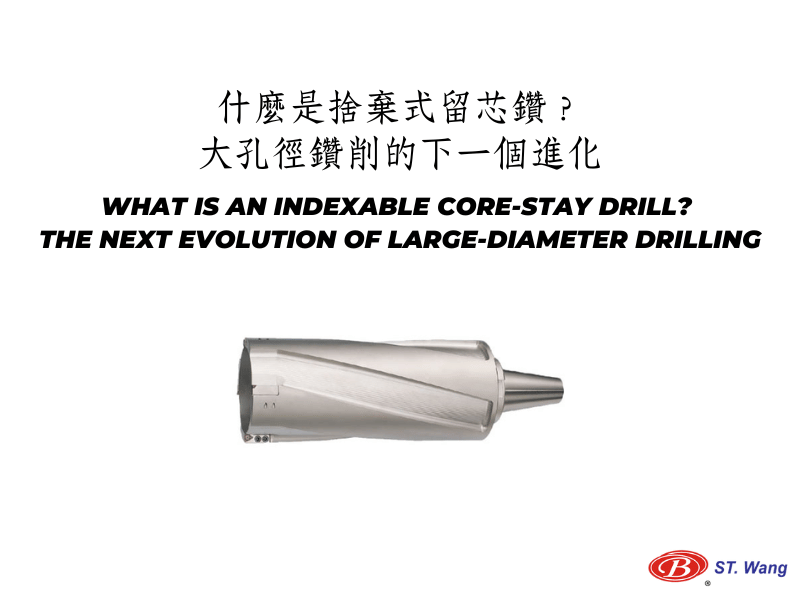Machining is always about speed, precision and dependability, but in today’s highly competitive manufacturing world efficiency is the most important factor. When you’re manufacturing automotive parts such as aerospace components or high-tech electronic components, the tools you choose will directly impact your financial results. Indexable drills, high-speed drills, end mills made of tungsten and threading inserts are essential.
These aren’t just a way to update older software. They are a more efficient method of working since they can reduce the time spent in downtime and expenses and produce better results. Look over each of them and see how they aid manufacturers in drilling deeper, make clean cuts, and finish quicker.

Image credit: stwang-tw.com
Indexable Drills: More Holes, Less Hassle
Before recently, drilling huge holes was time-consuming and expensive. Solid drills were slow to wear out, required sharpening and could slow down production lines. This is the reason why many machinists are switching to indexable drills. Instead of having to replace the entire drill when it gets dull, just switch out the cutting elements and get back to work in a matter of minutes.
What makes indexable drills stand out is their efficiency. These drills are designed to provide heavy-duty performance and extended runs. They also require minimal maintenance. You can reduce loss, keep your tool inventory at a minimum, and prolong the life of your machines by using replaceable inserts. SHANG TZANG WANG ENTERPRISE CO., LTD, offers modern core-stay drills for disposal that provide consistent results in large-diameter machining. This upgrade is perfect for shops who perform repetitive drilling and machining of holes. This can help them save hours every week.
High Speed Drills: Built for the modern demands
In a work setting where speed is essential, high-speed drills allow you to finish the job quickly, without sacrificing the precision. They are perfect for materials that are tough and have quick cycle times. From precision medical components to large-scale automotive components, they’re used everywhere.
Modern high-speed drilling tools feature cutting-edge coatings and optimized flute designs that decrease heat and friction, and increase the lifespan of the tool. This means fewer breaks and less tool replacements and more components. For any machinist who’s experienced the annoyance of a malfunctioning drill mid-cycle, switching to a high speed drill is an amazing experience.
Tungsten Carbide End Mills: Reliable Performance Cut After Cut
When the time comes to mill, tungsten-carbide end mills will be the most important part of your shop. The end mills’ durability and heat resistance are a preferred choice to cut through tough materials. They provide consistently good results, whether finishing small edges or roughing out large areas.
What really distinguishes tungsten carbide mills as special is their versatility. The various coatings, helix angles, and flute count are customized for a wide variety of tasks, ranging from aluminum to titanium. For machinists who need both quality and endurance, carbide end mills offer the perfect balance between aggressive material removal and clean surface finishes.
Threading Inserts: Tiny Tools, Big Impact
The process of creating threads might appear as a small part of the process, but this is one of the most important. A weak thread could ruin the best part. That’s why a high-quality threading insert matters. The small, reusable tools are designed to cut both internal or external threads with a high degree of accuracy and precision.
Threading inserts, as opposed to traditional dies and taps that wear out in a variety of ways provide reliable results. If one edge of the cutting becomes dull, just move the tool until you reach the next point of cutting. There is no need to take or regrind the tool. It’s quick, economical, and clean. Machinists not only love threading inserts due to their speed, but also because of their reliability. You can be sure that your threads are going fit right from the beginning. There are no second passes No rework or worries about rejecting parts.
The Bottom Line
In today’s machining, you cannot afford to spend time. The most efficient shops today are shifting towards more efficient and more adaptable machines. The cutting tools that are advanced aren’t just better at accuracy, they streamline workflows, reduce shifts, improve life span and improve user-friendliness. What’s the outcome? There is less time spent on troubleshooting, and more time spent delivering precision parts. In a world of tighter margins and higher demand are commonplace tools that perform more effectively give companies the competitive edge.

